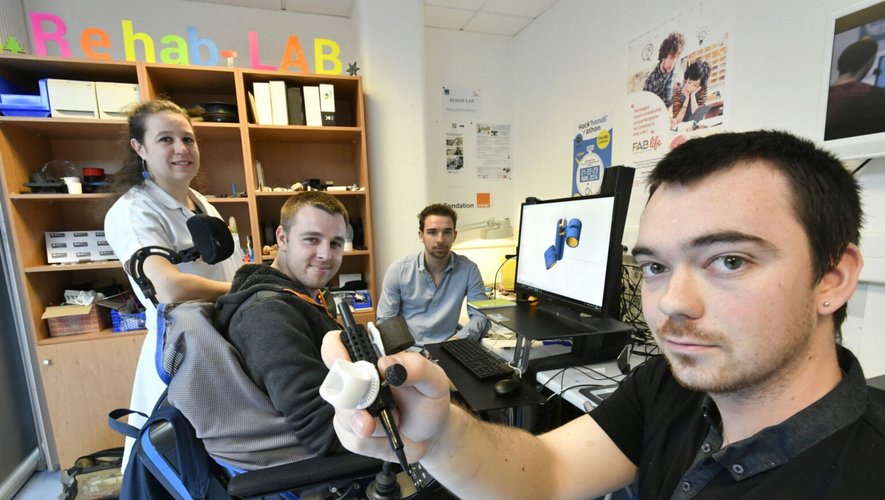A joystick in the image of a manga character to steer a wheelchair or even a finger guide for a computer mouse. What do these various devices have in common? They were all developed at Cowork’HIT, an innovation center in the field of disability, housed on the site of Kerpape, a rehabilitation establishment near Lorient. A “tailor-made” work intended to improve access in the field of disability.
It was for a 12-year-old girl that Lola Lauby, project engineer at Cowork’HIT, developed a joystick control for a wheelchair. Adapted to his handicap as well as his morphology, the controller is decorated with a small Pikachu in 3D. Totally personalized, it was designed in association with the young girl, a Pokémon fan. “Our job is to develop these aids in co-design with the user and his occupational therapist”, she explains. “These devices, tailored and better targeted, are unique products intended for this one person.”
Since the beginning of the adventure, Lola Lauby has responded to numerous requests for people suffering from multiple sclerosis, carriers of tetraplegia or even a disability related to myopathy. In total, the team has developed around 300 personalized technical aids. “For some in fifteen minutes. For others, it takes many sessions with users and caregivers before finding the right solution. It depends on the difficulty of the device”, she explains. It is sometimes necessary to adapt to the fatigue of the user, to the sensitivity of his limbs or even to a lack of communication.
Demedicalize the device
But what is the difference with the technical aids available on the market or developed by occupational therapists? In addition to personalization at the morphological level, these devices are also unique because they meet a particular need. So the teenage wheelchair Pikachu isn’t the only specific request Lola Lauby had to respond to. Jumbled up, she created an adapted pencil holder, a Breton puck thrower, a device allowing a triple amputee to mow his lawn with a rotary file… “With 3D printers, these custom requests do not cost more to manufacture and allow these objects to be demedicalized”, she specifies. “The device then becomes more of a personalized accessory, almost a piece of jewelry.”
Thanks to this flexibility, it is easier for the user to appropriate the technical aid. Another example, “At the request of a gentleman suffering from multiple sclerosis, having lost the sensitivity of his hands, I created a finger guide for his computer mouse”, says Lola Lauby. Objective, to ensure that his hand remained in place on the device. Small detail: the right finger guide is red and the left is blue in reference to the movie Matrix where the red pill represents the “truth of reality” and the blue, “the simulated reality of the Matrix”. A wink far from incidental for the cinephile.
And it’s not a luxury in terms of national data : “A third of technical aids are no longer used after one year”, says Anne-Claude Lefebvre, director of Cowork’HIT. For what ? “Because the needs of the user are not completely covered, learning about technical assistance is not enough, the device is not liked or is not suitable.” With the development of 3D printing, it is now possible to easily reproduce the same object from a digitized file. And to personalize it to the maximum, down to the details.
Support innovation in disability
In addition to the creation of personalized aids, the Cowork’HIT innovation center also offers “tailor-made support for innovative start-ups so that their project can be marketed”, explains Anne-Claude Lefebvre, director of Cowork’HIT. “And we also respond to requests from health establishments, health professionals, associations and other sports federations for the development of suitable devices.” This is how the center developed a positioning aid kit to adapt to a rowing seat. Athletes with disabilities can now practice this sport.

